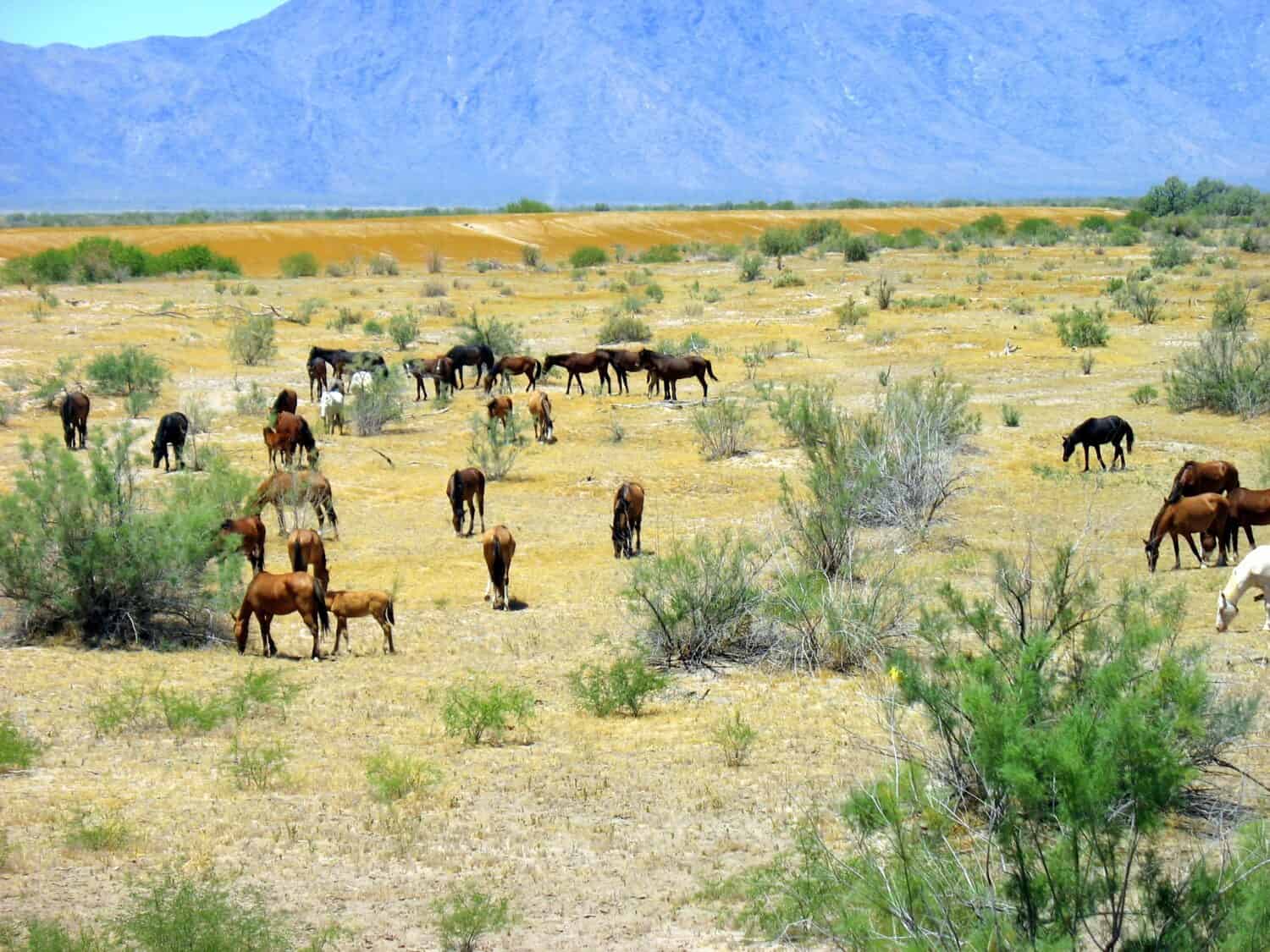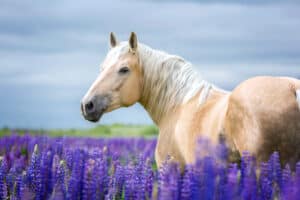Wild horses regularly travel up to 40 miles across rocky, uneven terrain every day. Their hooves take them places, but they also take a beating! So do horses’ hooves become overgrown in the wild? And how do wild horses maintain their hooves? Let’s discover the answers to those questions together!
The Wild Horse Population in the United States
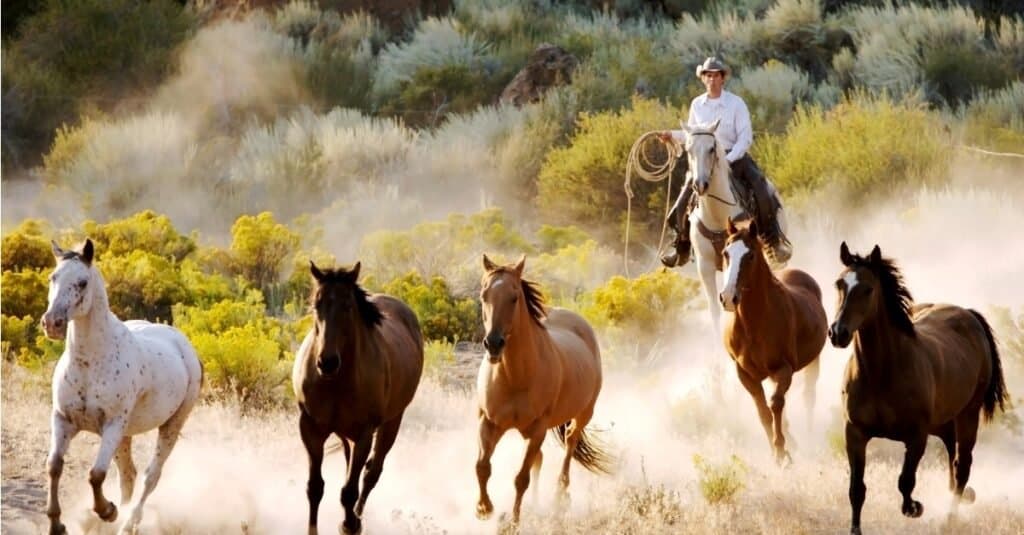
Wild horse populations in the U.S. are growing too large for the land to maintain. The BLM conducts routine round-ups to control the herd numbers.
©iStock.com/jeannehatch
First, let’s learn more about the current wild horse population in the United States. As of March 2023, 82,883 wild horses are roaming the United States on Bureau of Land Management (BLM) land. This land encompasses prairies and plains of the western area of North America.
This number has risen by almost 20,000 since 2022. It’s also 3x higher than what’s sustainable for the land and the herds living on it. This is why the BLM routinely rounds up and puts wild horses up for public adoption to keep the population controlled.
How Long Do Wild Horses Live?
It may come as no surprise, but wild horses tend to have shorter lifespans than domesticated horses. This is due to their lack of a balanced diet and regular vet or farrier care. In the wild, natural predators like wolves, bears, and cougars are also a factor as horses are prey animals. Wild horses only live about 15 years on average, while a domesticated horse’s lifespan is closer to 25-30 years.
There are some outliers though! The oldest documented wild horse was 36 years old, while the longest-living domestic horse was 62.
What Types of Hoof Problems Do Wild Horses Deal With?
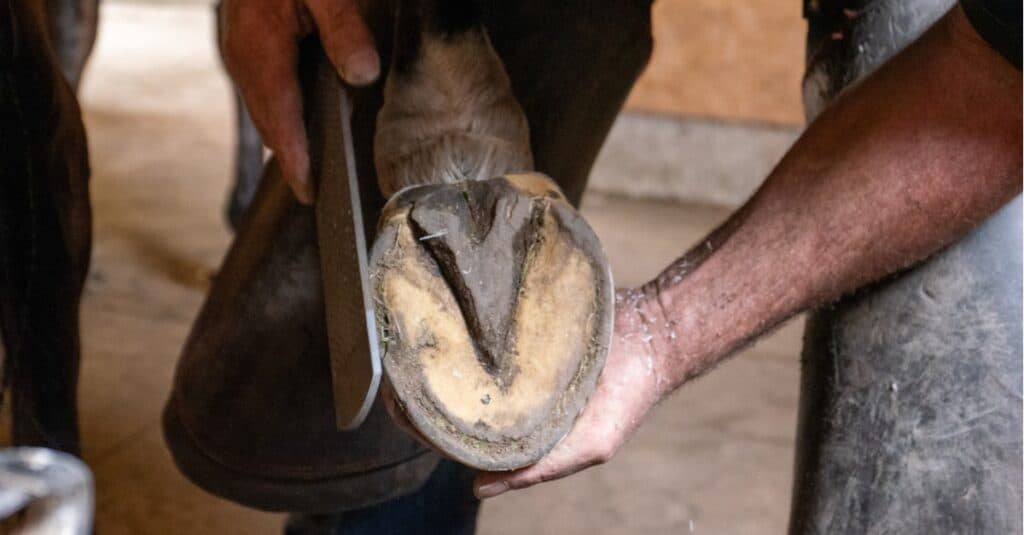
Routine hoof care is crucial for domesticated horses. Wild horses maintain their hooves naturally.
©iStock.com/K Neville
Hoof problems are a common reason horses don’t live as long in the wild. Without routine farrier appointments to trim and maintain their hooves, wild horses are at risk of:
- Overgrown or unbalanced hooves
- Thrush
- Abscesses
- White line disease
- Seedy toe
- Laminitis
How Do Horses Maintain Their Hooves in the Wild?
Even though wild horses are more at risk for overgrown or unbalanced hooves and other problems due to a lack of routine farrier care, they do know how to maintain their hooves in the wild.
The Lifestyle of a Wild Horse

©Brent Coulter/Shutterstock.com
A wild horse’s lifestyle is how they can manage without hoof trims. A typical day involves traveling a few dozen miles over rocks, deserts, mountains, and rivers. They stay moving to avoid predators, find water, and forage for the herd. This amount of travel across such vast terrain means their hooves wear down naturally.
The Lifestyle of a Domesticated Horse

Domesticated horses carry riders across unnatural surfaces, which is why they need regular farrier appointments for their hooves.
©pirita/Shutterstock.com
Domesticated horses don’t travel as far and have a much different lifestyle than wild horses. They require farrier appointments every 4-6 weeks to upkeep their hooves. This is because they:
- Are subjected to concrete or gravel ground
- Bear the weight of a rider
- Carry large loads like wagons, carriages, or farm equipment
- Participate in sports like eventing and racing
What Did Horses Do Before Humans Trimmed Their hooves?
Just like wild horses do now, they walked around “barefoot” (without horseshoes on) and wore down their hooves by traveling large distances to forage for food with their herd.
Due to genetics and natural conditions, horses’ hooves adapted to the wild terrain long before we domesticated them and farriers came around.
How Do Wild Horses Manage Without Hoof Trimmings?
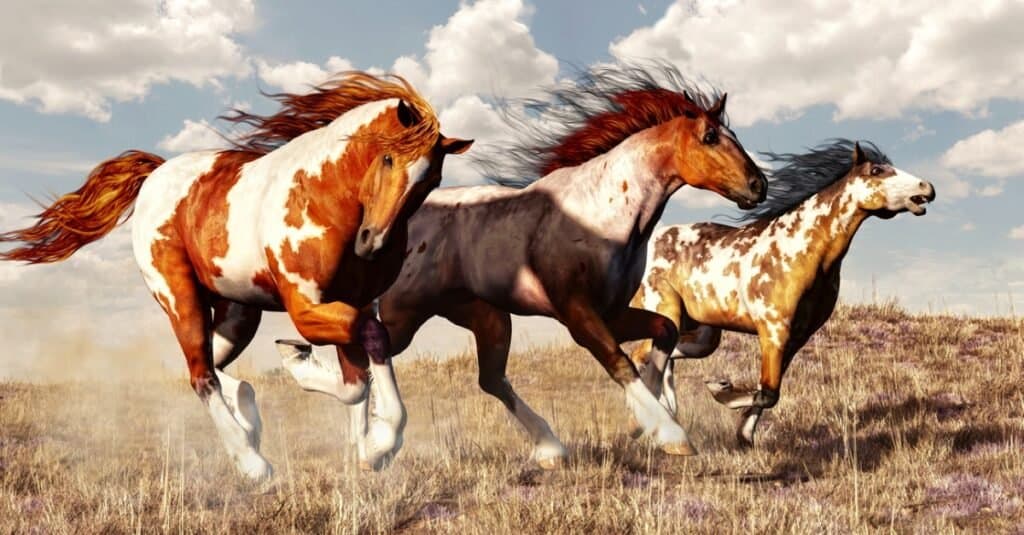
Wild horses can travel 30-40 miles a day and gallop at speeds around 25-30 MPH!
©iStock.com/Daniel Eskridge
Wild horses manage just fine without hoof trimmings. Through natural selection, the horses who struggle with unbalanced hooves or abscesses won’t breed as much and pass that gene down to as many offspring. Plus, wild horses travel long distances daily, which is how they manage in the wild without hoof trims.
Who Cuts Wild Horses’ Hooves?
Unlike with a domesticated horse, you can’t call a farrier out to your farm for routine shoeing for a wild horse. So who cuts a wild horse’s hooves? No one! They naturally wear down as they travel from spot to spot, searching for forage and water.
Do Wild Horses’ Hooves Become Overgrown?
There is always a chance wild horses’ hooves can become overgrown. If they are old, suffering from an injury, or don’t feel well then they won’t move around as much. This can cause a wild horse’s hooves to become unbalanced, leading to even more movement problems.
However, most wild horses travel enough on terrain that wears down their hooves naturally and prevents them from becoming overgrown.
What Happens If You Don’t Cut Horses’ Hooves?
If you don’t cut a domesticated horse’s hooves, you could find yourself with serious problems. Overgrown or untrimmed hooves are prone to flaring, chipping, and hoof defects. Lack of hoof care leaves horses vulnerable to injuries that can cause bruises, infections, or abscesses.
It’s quite different for wild horses. If you don’t trim a horse’s hooves in the wild, they will usually wear down naturally due to how often and far they travel in search of forage.
Do Wild Horses Need Their Hooves Trimmed?
No, wild horses do not need their hooves trimmed. This is because their lifestyle takes care of the maintenance for them! Wild horses forage for food across vast distances and wear down their hoofs on tough terrain daily.
Domesticated horses only require routine hoof maintenance because we changed their habits and living situations. They stand in a stall, get ridden on unnatural surfaces, and only have access to only a few acres to roam. This is why the owners are responsible for keeping up with trims and getting them shoes since domesticated horses’ lifestyles don’t wear their hooves down naturally.
How Do Wild Horses Survive Without Farriers?
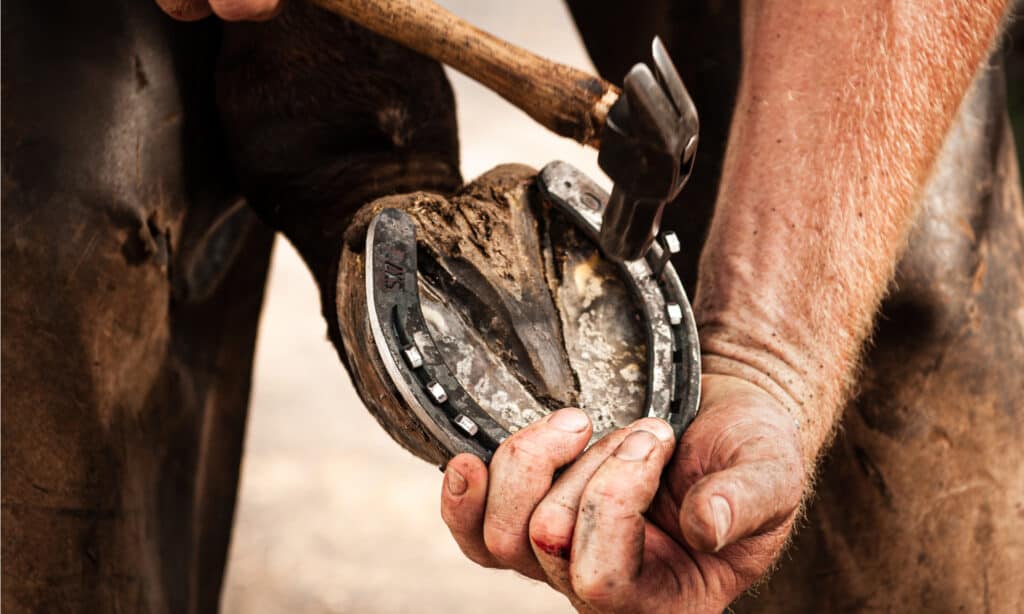
A farrier will come out to trim and put horseshoes on domesticated horses. Wild horses don’t need a farrier.
©MarienAvery/Shutterstock.com
Wild horses survive just fine without farriers in the wild. Traveling between 30-40 miles a day sure does help them!
The distance they roam daily naturally wears down a wild horse’s hooves, preventing them from developing common hoof issues for domesticated horses like thrush. While older or injured horses in the wild may struggle to prevent unbalanced hooves, they don’t run into the level of overgrowth as much as domesticated horses do.
Thank you for reading! Have some feedback for us? Contact the AZ Animals editorial team.

